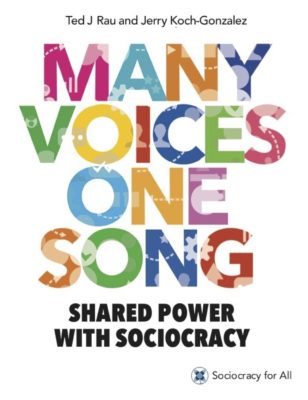Ecovillege of Loudoun County in Virginia was one of the first in the to adopt sociocracy when it began in the 1990s.
As is true with all governance changes, it is easier to begin with sociocracy than to switch midstream. Communities tend to stick with “the devil they know” rather than take a chance on a new one, but more and more and more communities are switching full scale or adopting some of the principles and practices.
Except for those who have switched to sociocracy, cohousing communities use full group consensus as their primary method of decision-making. Decisions are typically made in meetings open to the full membership and with the consent of each person present. As cohousing communities have grown larger, from 12 to more than 50 households, and include increasingly more diverse populations, full group consensus has become ineffective for many, if not most. Making decisions with less than 50 people is very different from 100 or more.
In addition, many communities are more complex. They now have programs that do not involve all members—gardens, chickens, home schooling, yoga groups, etc. Consensus requires a shared aim. Delegating decisions to those who share these aims is a reasonable use of everyone’s time and energy.
Switching to Sociocracy
It is a misconception that communities switching to sociocracy cannot have full group decision-making meetings. When delegating decisions to circles, communities can also delegate decisions to “full circle meetings”, meetings of all the circles. Annual budget approval, for example, is required to be made by all owners in condominiums in Washington DC. Since most cohousing communities are condominiums, this is probably true in other states as well. Another decision that might appropriately belong in a full circle meeting is changing the vision, mission, or aim.
Sociocracy allows communities to keep the collaborative and inclusive qualities of full group decision-making while providing a structure for delegating decisions to sub-groups—committees, teams, circles, etc. Policy decisions and a coordinating structure then guide the sub-groups.
Consent vs. Consensus
While I understand the reasons for opposing consensus with consent, I believe that in the end it is self-defeating. It becomes a battle of definitions and adds a new definition unnecessarily. This distracts from the purpose. By adopting sociocracy, a community adopts a decision-making structure in which consensus more effective. Its principles and practices shift the debate from stalemate to action. It helps organize large communities so they function more effectively as excellent places to live.
Sociocracy Strengthens Consensus
The sociocratic definition of consent is “no objections.” An objection means the proposed action cannot be taken until that objection is resolved—just as it is in full group consensus. Sociocracy uses “consent” to emphasize that the decision is being made by an individual based on their own ability to “live with” the decision. It isn’t based on a hypothetical or projected standard of the “good of the community” as full group consensus practices often does. An objection is made in the context of the aim of the decision, how it affects one’s own participation in the community, and its expression of the communities stated aims (if any).
Consent can be given when there are still concerns and unmet needs but sociocracy values action, moving forward, with what appears to be reasonable decision given the circumstances. It doesn’t have to be perfect. Concerns, limitations, fears, assumptions, etc., can be used to design measurements for evaluating the effects of the decision. Then it can be improved based on results.
The sociocratic circle-organization method is the only one that supports and invigorates consensus decision-making.
Originally written 6 January 2013
Substantially revised 19 April 2014
Categories: In Home and Family

